Europe Tier 2 Scene: Key Tournaments, Format & Prize Details
Updated On: October 21, 2025 by Aaron Connolly
What Defines the Europe Tier 2 Scene

The Europe tier 2 scene sits right between pro leagues and grassroots competitions. Here, players get structured tournaments, real prize money, and a shot at climbing to the top level.
This layer includes organized leagues, third-party tournaments, and regional competitions. It’s honestly a bit different from what you’ll see in other parts of the world.
Distinction from Tier 1 and Tier 3
Tier 1 is the pinnacle of European esports. These are franchised leagues with huge budgets, full-time salaries, and international matches. Teams fight for hundreds of thousands in prize money.
Tier 2 fills the gap with semi-pro competition. Players often juggle part-time jobs while competing. Major tournaments usually have prize pools between €15,000 and €20,000.
In Rainbow Six Siege, the 2025 European Tier 2 circuit puts €75,000 up for grabs across three main tournaments. Winners grab spots in the Europe and MENA League Challenger Series.
Tier 3 is all about national leagues. Countries like the UK, Netherlands, and Belgium each run their own competitions. These feed talent into tier 2.
This setup gives Europe a pretty clear path forward. Players can start local, move through national leagues, and end up in continental tier 2.
Key Stakeholders and Organisations
Ubisoft runs Rainbow Six Siege’s European tier 2 directly through official circuits. They set prize pools, create point systems, and decide qualification rules.
Third-party tournament organisers host extra competitions. These hand out competitive points that help teams reach major finals. Not every tournament gives the same amount of points.
Regional leagues operate independently all over Europe. They keep tier 3 going and help move talent up the ladder.
Teams and players really make this whole thing tick. Many tier 2 players balance gaming with jobs or school. They’re chasing prize money and hoping to catch the eye of tier 1 orgs.
Teams rack up points across tournaments to qualify for grand finals and the challenger series. The point system keeps everyone honest and competitive.
Comparison with NA and Other Regions
North America doesn’t have Europe’s deep national league system at tier 3. This makes international comparisons a bit messy.
Europe’s tier 2 offers more structure. National leagues keep competition active all year. In NA, tier 2 leans more on standalone tournaments and qualifiers.
Prize money gets split up differently. Europe spreads cash across many regional events. NA piles bigger prizes into fewer tournaments.
Player development doesn’t look the same either. European players climb from local to national to continental. NA players sometimes leap from amateur straight into big tier 2 events.
Europe’s model gives more people a chance to play, but each event might offer less money. NA has bigger payouts, but fewer shots to compete.
Europe also has its own headaches. MENA teams aren’t allowed to play in both Saudi eLeague and European tier 2, even though they share the Europe and MENA League at tier 1.
2025 Europe Tier 2 Circuit Structure
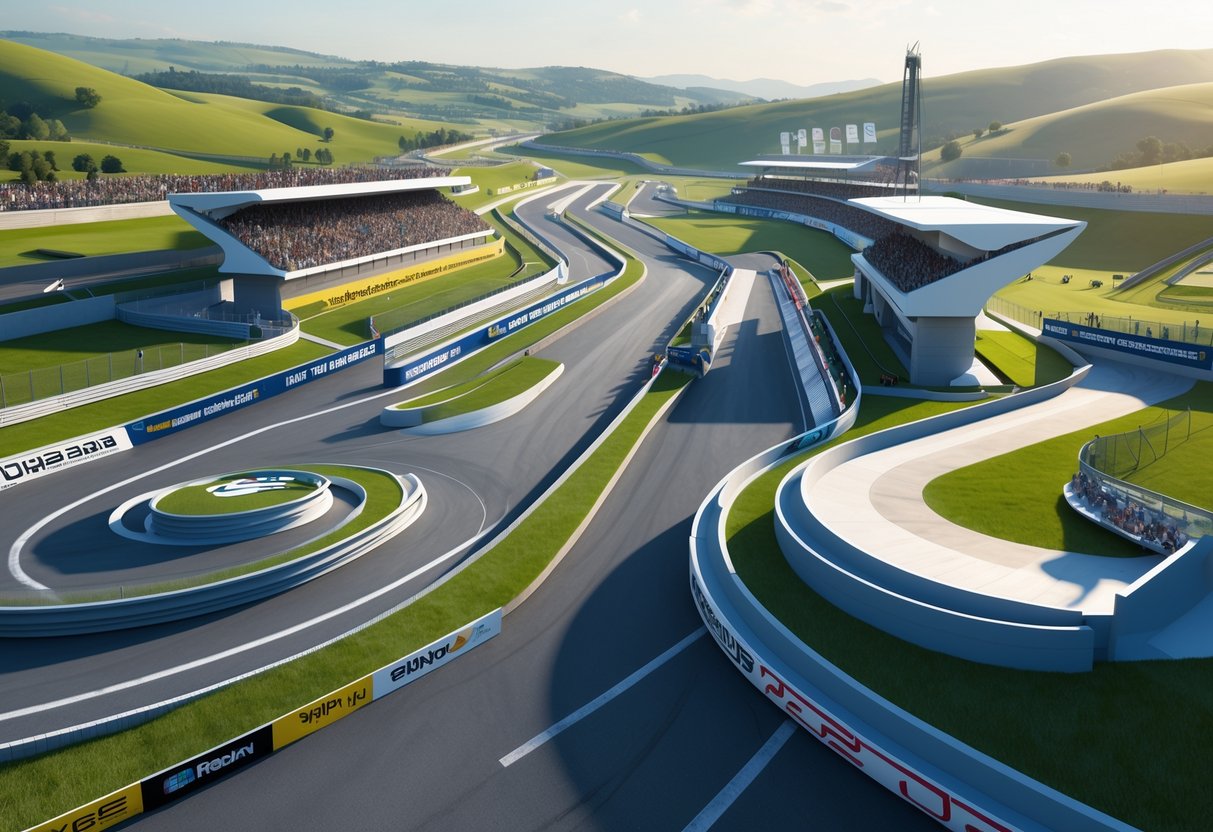
The European Tier 2 scene has shifted toward a more connected system. Now, three main tournaments each offer €20,000, with extra circuit points up for grabs at partnered events. Teams from Middle East and North Africa can join too.
Teams get several ways to qualify and compete for a total prize pool of €75,000 across the season.
Season Calendar and Format
The 2025/26 European Tier 2 circuit runs from June to November. There’s a clear path forward.
Three main tournaments anchor the season: R6 Central Combine, R6 South Breach, and R6 North Rainbow Rumble.
Each tournament uses a multi-phase format. The Central Combine really lays this out with four separate phases.
Phase breakdown:
- Open Qualifiers: Four weekends in late June
- Division Clash: 16 teams split into divisions (early July)
- Conference Clash: 12 teams in two conferences (mid-July)
- Playoffs & Finals: Six teams in single elimination
Offline finals come back to Europe, with Central Combine’s grand final set for 2nd August in Düsseldorf. Feels good to see live events return after so many online-only tournaments.
Teams collect circuit points at every main tournament. These points decide seeding for the year-end playoffs and the big €15,000 grand final.
Qualification and Progression
Teams have a few ways to get in now. The main route is still open qualifiers, but partnered secondary tournaments now hand out extra circuit points from June to November.
Open qualifiers are open to teams from Europe, Middle East, and North Africa. The top 16 from each main tournament’s qualifier move on to division play.
Progression requirements:
- Play on PC only
- Teams need proper roster docs
- Circuit points set playoff seeding
The playoffs send the best teams straight to the Challenger Series 2026. That’s a direct path from Tier 2 to the top level of Rainbow Six Siege.
Community casting is open for every phase. Streamers can apply on Discord to co-stream matches or host watch parties.
Impact of Ubisoft’s Roadmap
Ubisoft’s 2025/26 roadmap shakes up European Tier 2 more than ever. The publisher bumped the total prize pool to €75,000 and let more regions join.
Key changes:
- Updated roster rules and transfer windows
- New promotion rules for teams
- MENA teams now part of European events
- More support for tournament organisers
Ubisoft listened to feedback about limited events outside the big tournaments. Now, secondary partners give teams something to play for all year.
Offline finals are back as a big deal. Ubisoft’s push for live events shows they believe in the European scene’s growth and fan support.
Role of Partnered Tournaments
Secondary tournaments now tie directly into the circuit point system. Tournament organisers can apply for partnership with Ubisoft.
Partnership requirements:
- Run between June-November 2025
- PC platform only
- Follow secondary circuit rules
- Need Ubisoft’s approval
Ubisoft helps out partnered events with promos and tech support. This opens doors for smaller organisers to make a real impact.
Teams get more chances to play, not just during main events. Circuit points from partnered tournaments count toward playoff spots and seeding.
Organisers apply for partnership at r6esports.com/tournament-license using the custom licence option. Ubisoft doesn’t approve every event, so standards stay high.
R6 Central Combine
R6 Central Combine stands as one of the three main tournaments in Ubisoft’s European Tier 2 circuit. Teams fight for a €20,000 prize pool and important circuit points. The action runs from June through August, ending with an offline final in Germany.
Tournament Schedule and Location
R6 Central Combine sticks to a tight summer schedule. Open qualifiers start on 21st June and run through 29th June.
Key Tournament Dates:
- Open Qualifiers: 21st-22nd June and 28th-29th June
- Division Clash: 5th-6th July
- Conference Clash: 12th-13th July
- Playoffs: 19th-20th July
- Grand Final: 2nd August (offline in Düsseldorf)
The tournament wraps up with an offline final in Düsseldorf, Germany. In-person competition is back, and honestly, it just feels better than all-online play.
Teams have to make it through online phases to reach the live finale. The atmosphere and prestige of LAN events just can’t be matched online.
Participant Criteria
R6 Central Combine invites teams from Europe, Middle East, and North Africa. Ubisoft clearly wants to grow beyond just the old European borders.
All matches are on PC. The tournament is aimed at ambitious Siege players who want to break into higher tiers.
Teams register on Challengermode and need to meet Ubisoft’s latest roster requirements for the 2025/26 season.
Anyone eligible can enter the open qualifier, no matter their competitive history. It’s a great way for fresh talent to get noticed, and established teams get multiple shots at qualifying.
Format and Competitive Points
The tournament runs a four-phase elimination system, starting with 256 teams and narrowing to six finalists. The top 16 from open qualifiers move to Division Clash.
Competition Structure:
- Phase 1: Four open qualifiers (top 16 move on)
- Phase 2: 16 teams split into four divisions, two conferences
- Phase 3: 12 teams face off in cross-conference matches
- Phase 4: Six-team single elimination bracket and offline final
Teams get at least €1,000 for making playoffs. Semi-finalists pick up €2,000, runners-up take €4,000, and the champs walk away with €10,000.
Points earned here help teams qualify for the T2 Grand Final, which has another €15,000 up for grabs. These points also open doors to Challenger Series 2026, so there’s real upward mobility for top teams.
R6 South Breach
R6 South Breach is another anchor of the European Tier 2 circuit. Teams compete for €20,000 and key points for the annual Grand Finals. The event runs through autumn, with several qualifiers leading to offline finals in February.
Structure and Key Dates
R6 South Breach uses the same qualifier structure as the other big Tier 2 events. Teams play through four online qualifiers and collect points based on performance.
Key tournament dates:
- Qualifiers: October-November
- Main event: November 2024
- Finals: 22nd-23rd February 2025 at EPICLAN44 (UK)
Teams’ worst qualifier result doesn’t count, so everyone gets a fair shot. Only 16 teams make it to the main event.
Those 16 then battle through group stages and playoffs for both cash and circuit points.
The offline finals at EPICLAN44 bring proper LAN energy. The winners grab €10,000, with runners-up getting €4,000 out of the €20,000 pool.
Regional Significance
R6 South Breach is one of three tournaments that decide Europe’s top Tier 2 teams. Circuit points here add to results from Central Combine and North Rainbow Rumble.
The six teams with the most points across all three tournaments make it to the Europe Tier 2 Grand Finals. That last event offers another €15,000 and crowns the best Tier 2 squad.
Circuit impact:
- Total prize pool: €75,000 across all events
- Grand Finals spots: Top 6 teams qualify
- Pro pathway: Winners often move up to Tier 1
The event has grown a lot since the early days. Community casting lets new broadcasters get involved and helps build the scene from the ground up.
Teams use South Breach to prove themselves before aiming for Tier 1. The offline finals give Tier 2 teams the LAN experience they really need.
Rainbow Rumble Tournament
Rainbow Rumble adds a different vibe to the European Tier 2 circuit. Its winter schedule and unique features give it a special place.
The tournament puts the spotlight on rising talent and lets promising players show what they can do. You never know—some of these names could shape the future of Rainbow Six Siege esports.
Unique Features
Rainbow Rumble really stands out as the winter centerpiece for the European Tier 2 circuit. The tournament usually runs from August to September, bridging that awkward gap between Central Combine and South Breach.
Teams fight for a £20,000 prize pool, which matches the other main tournaments in the circuit. This competition also gives out crucial Circuit Points for Grand Finals qualification.
The qualification structure stays the same as other Tier 2 events. Teams start with open qualifiers, which any European player can join.
Academy teams from BLAST R6 European League organizations can join in, but with a catch. They can only use one player from their main roster, which helps keep things fair for amateur teams.
Community casting happens throughout the early phases, giving aspiring talent a shot at broadcasting. This also means fans get to watch more matches.
The timing of the tournament adds a strategic layer for teams. Every match matters for squads who want to reach the Grand Finals.
Player Highlights
Rainbow Rumble keeps producing breakout performances from players nobody really knew before. The tournament’s competitive setup often uncovers hidden gems in the European scene.
A lot of participants use this event to try and break into the professional ranks. If you play well, established organizations might start paying attention.
Coaching staff from Tier 1 teams watch Rainbow Rumble games closely. They’re always scouting for players who show tactical awareness and mechanical skill under pressure.
The format gives individual players a real chance to show off their versatility. Each phase tests something new, from qualifiers to playoffs.
Some unknown players have landed contracts with semi-pro teams after past editions. These stories really show how the tournament opens doors for ambitious players.
Teams often use Rainbow Rumble stats to make future roster decisions. They look at individual performances when thinking about recruitment or internal promotions.
Grand Finals and Advancement Opportunities
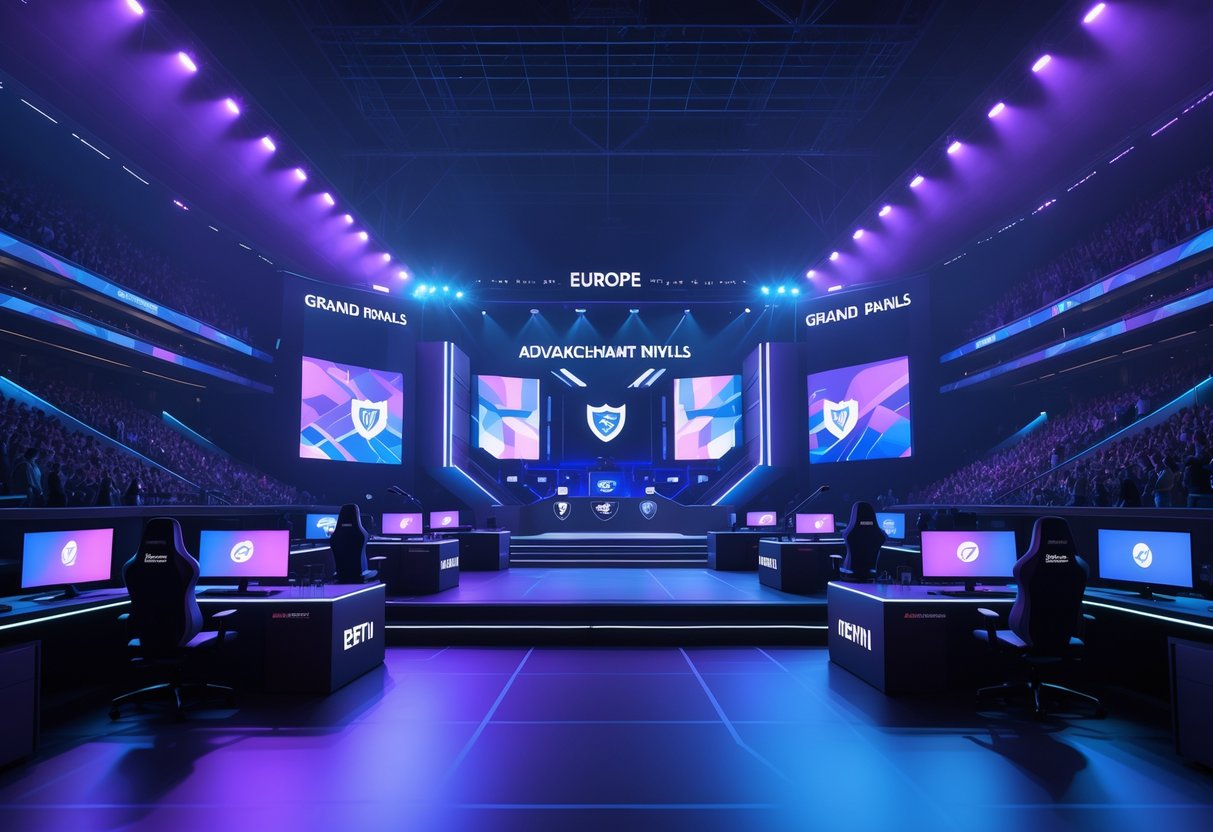
Europe’s best Tier 2 teams battle for €15,000 at the Grand Finals after the Six Invitational. This event acts as the main gateway for teams aiming to move up in Rainbow Six Siege’s competitive ecosystem.
Qualification Process
Four teams grab their spots at the EU T2 Grand Finals by performing well in the year’s major tournaments. Central Combine, Rainbow Rumble, and South Breach each offer €20,000 prize pools and qualification points.
Teams rack up points based on their placements throughout the season. The top four performers across all main events lock in their Grand Finals spots.
Secondary partner tournaments also feed into the qualification system. These events pop up across Europe and give more teams a shot at earning points.
The Grand Finals happen after SI2025 wraps up. That timing lets teams prove themselves over the full competitive season before the final showdown.
Connection to Europe and MENA League
The Tier 2 Grand Finals act as a major stepping stone toward higher-level Rainbow Six play. Top teams put themselves in position for bigger tournaments and leagues.
MENA teams can now join the European Tier 2 circuit for the 2025/26 season. This change brings in a broader talent pool and stirs up the qualification race.
Live finals are back, bringing a professional feel to the stage. This move mirrors what higher-tier Rainbow Six events do and gives players a taste of offline tournament pressure.
Teams that shine in the Grand Finals often catch the eye of organizations and sponsors looking for emerging talent.
Prize Pool Distribution
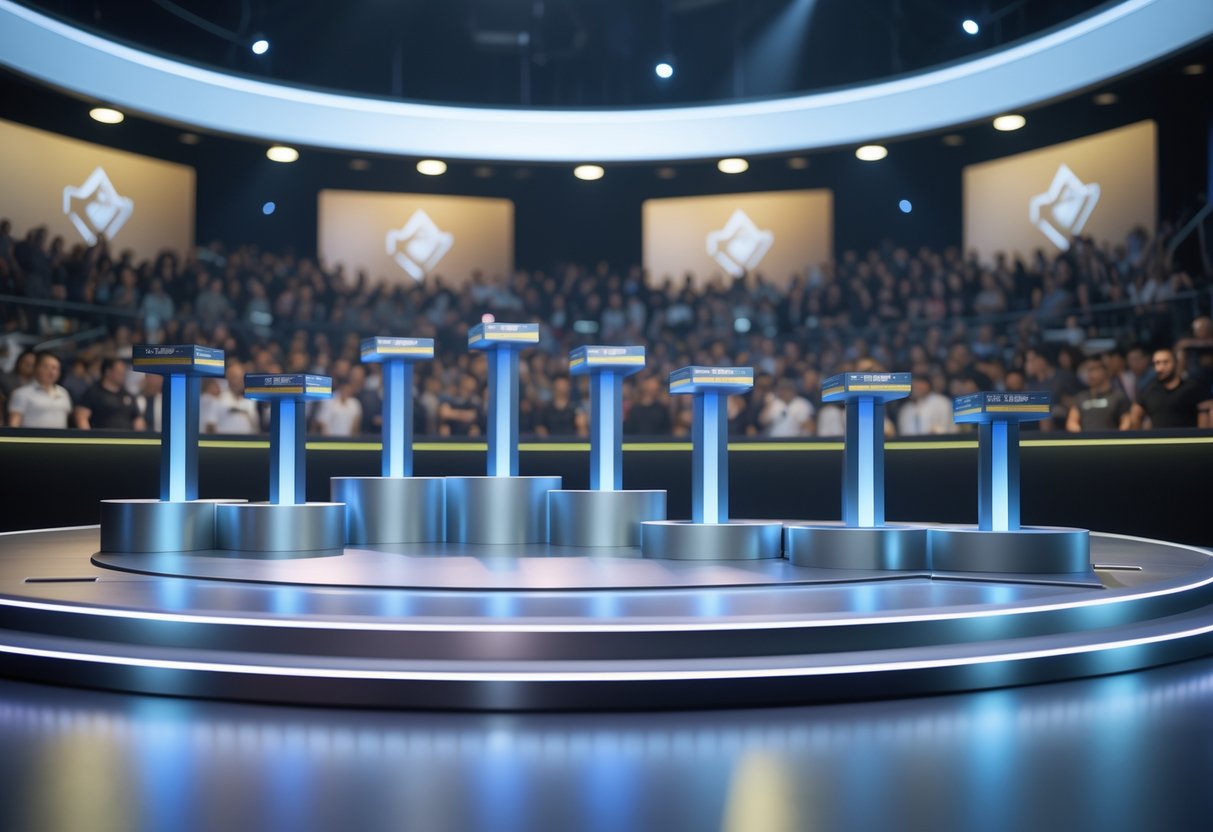
The European Tier 2 circuit puts up €75,000 in total prize money across three main tournaments and a grand final. Each main event has a €20,000 prize pool, with the T2 Grand Finals adding another €15,000 for the continent’s top teams.
Breakdown Across Events
Primary Tournament Structure Each of the three main tournaments—R6 Central Combine, R6 South Breach, and R6 North Rainbow Rumble—offers identical €20,000 prize pools. That means teams get steady earning chances all season.
For Central Combine, the prize distribution goes like this:
- Champions: €10,000
- Runners-up: €4,000
- 3rd/4th place: €2,000 each
- Playoff qualifiers: €1,000 each
T2 Grand Finals Prize Pool The season ends with a €15,000 grand final for the top teams from all three events. This offline battle crowns Europe’s best Tier 2 squad and hands out a serious payday.
Additional Opportunities Secondary tournaments in the circuit add more prize pools and circuit points. These smaller events let teams build up points for grand final qualification and snag extra cash.
Comparison with Previous Years
The 2024/25 season brings a clear increase in total prize money compared to older European Tier 2 formats. The circuit moved away from isolated tournaments to a more connected system.
Enhanced Structure Benefits Prize money now spreads out more evenly over the year. Teams don’t have to rely on just one big event—they can earn consistent income from several tournaments.
Accessibility Improvements More teams get a piece of the pie thanks to the expanded tournament structure. Just making the playoffs guarantees €1,000, which makes competing a lot more realistic for semi-pro squads.
Teams now have clearer ways to reach big prize pools. With points stacking up, there are multiple routes to qualify for top events.
Competitive Points System
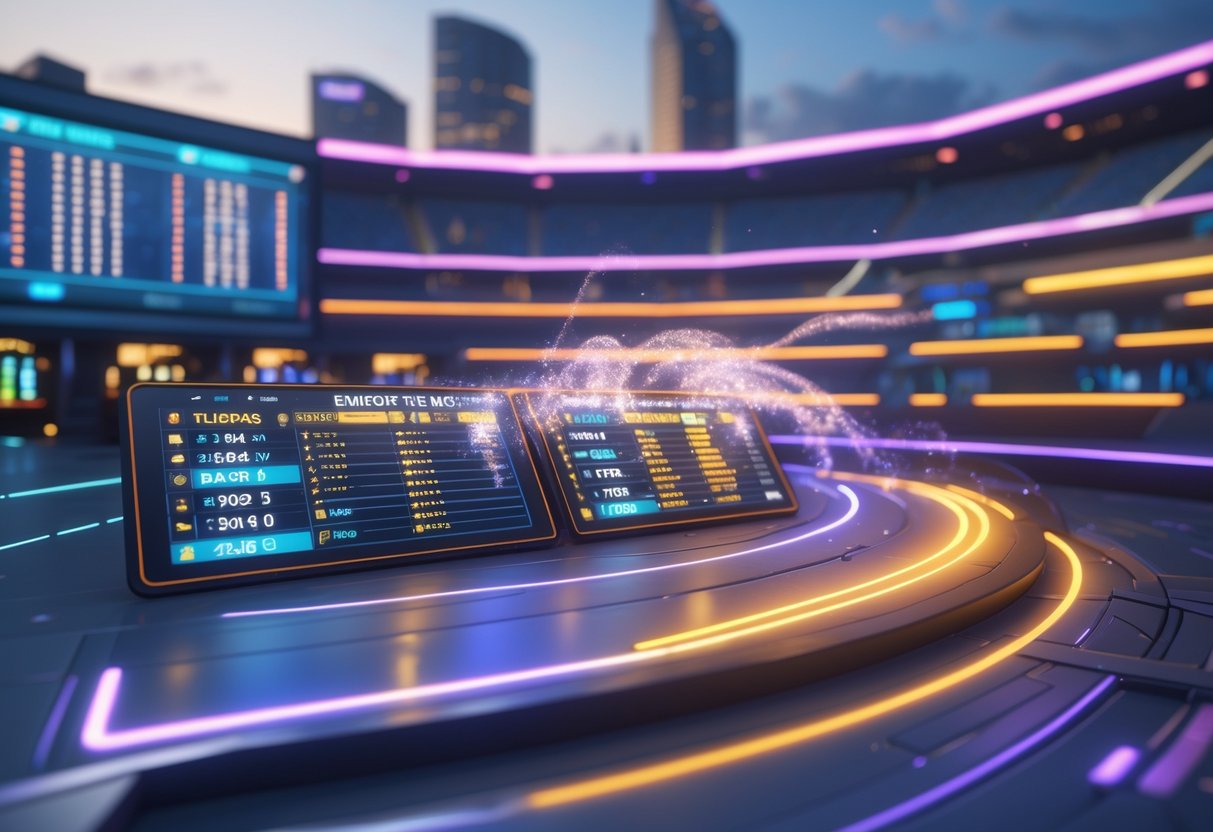
Teams rack up Competitive Points based on how they perform in different tournaments. These points decide which four teams make it to the EU T2 Grand Finals in November.
Primary vs Secondary Events
The three main tournaments each hand out 680 Competitive Points to divide among teams. These are R6 Central Combine (June-July), R6 Rainbow Rumble (August-September), and R6 South Breach (September-November).
Each main event has a €20,000 prize pool. Teams go after the biggest chunk of points at these tournaments.
Secondary tournaments don’t give as many points, but they pop up more often. Online tournaments with 16+ teams award 225 points, while smaller online events (8-15 teams) give 105 points.
LAN tournaments offer premium points in the secondary circuit. Events with 8+ teams hand out 225 points, just like the big online tournaments. Smaller LAN events (4-7 teams) still offer 105 points.
Regional tournaments fall somewhere in between for points. Big regional events (16+ teams) offer 180 points, and smaller ones give 105 points.
Effect on Team Rankings
Teams build up points in every tournament they enter from June to November. The four teams with the most points qualify for the EU T2 Grand Finals, which has a €15,000 prize pool.
The system rewards teams that stay consistent across several events, not just those who spike in one tournament. Teams can mix and match primary and secondary events to boost their totals.
The Grand Finals winner and runner-up automatically qualify for the Europe and MENA League Challenger Series 2026. That’s the main ticket to pro Rainbow Six Siege.
Teams have to think carefully about which events to enter, balancing point potential with their current rankings.
Influence of Ubisoft on Europe Tier 2
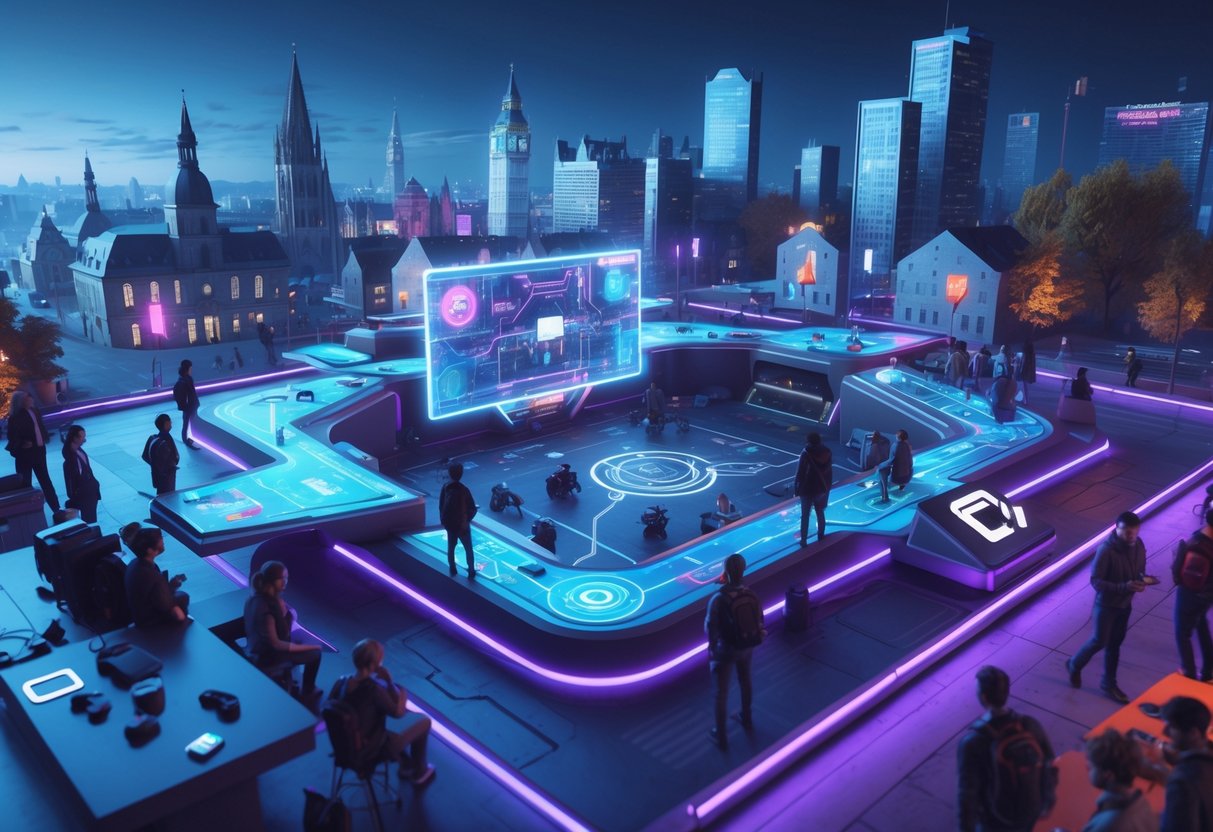
Ubisoft has gone from being a hands-off publisher to running the show for Europe’s Tier 2 Rainbow Six Siege scene. Now, Ubisoft handles tournaments directly, sets up €75,000 in prize pools, and links European competition to global pathways through the Challenger Series.
Tournament Management
Ubisoft took charge of European Tier 2 tournaments in 2025, ditching the old fragmented system for three core events. R6 Central Combine, R6 North Rainbow Rumble, and R6 South Breach all offer €20,000 prize pools under Ubisoft’s eye.
The publisher manages everything—rulebooks, broadcast partners, and all. Teams have to follow Ubisoft’s roster rules and new transfer windows. Ubisoft also dishes out circuit points across every sanctioned event.
Ubisoft opened up tournament eligibility to Middle East and North Africa teams in 2025. That move nearly doubled the player pool, while still keeping the European structure intact.
They also rolled out licensed partnerships for secondary tournaments. Third-party organizers can apply for a Ubisoft tournament license to offer circuit points. These events have to run between June and November 2025 and stick to PC only.
Offline finals came back with Ubisoft in charge. The Central Combine finals happened in Düsseldorf on 2nd August 2025, giving teams a live audience vibe that online formats just can’t match.
Integration with Global Circuits
Ubisoft now connects European Tier 2 right into global competition through the Challenger Series. Teams that do well in the €15,000 Grand Final get straight into Challenger Series 2026.
This setup finally gives European teams a clear path to pro play. Before, regional winners had to deal with sketchy qualification rules. Now, Ubisoft guarantees advancement opportunities for top teams.
The company launched a global competition hub for Europe, Americas, Asia, and Oceania. European Tier 2 sits right in this system, sharing formats and qualification structures across regions.
Circuit points from European tournaments count toward global rankings. Teams can track their progress against international rivals all season. That kind of transparency helps players see what they need to hit the pro circuits.
Ubisoft lined up tournament timing with the global esports calendar. European events run June through November, so there’s no overlap with big international tournaments and player movement stays smooth.
Controversies and Challenges
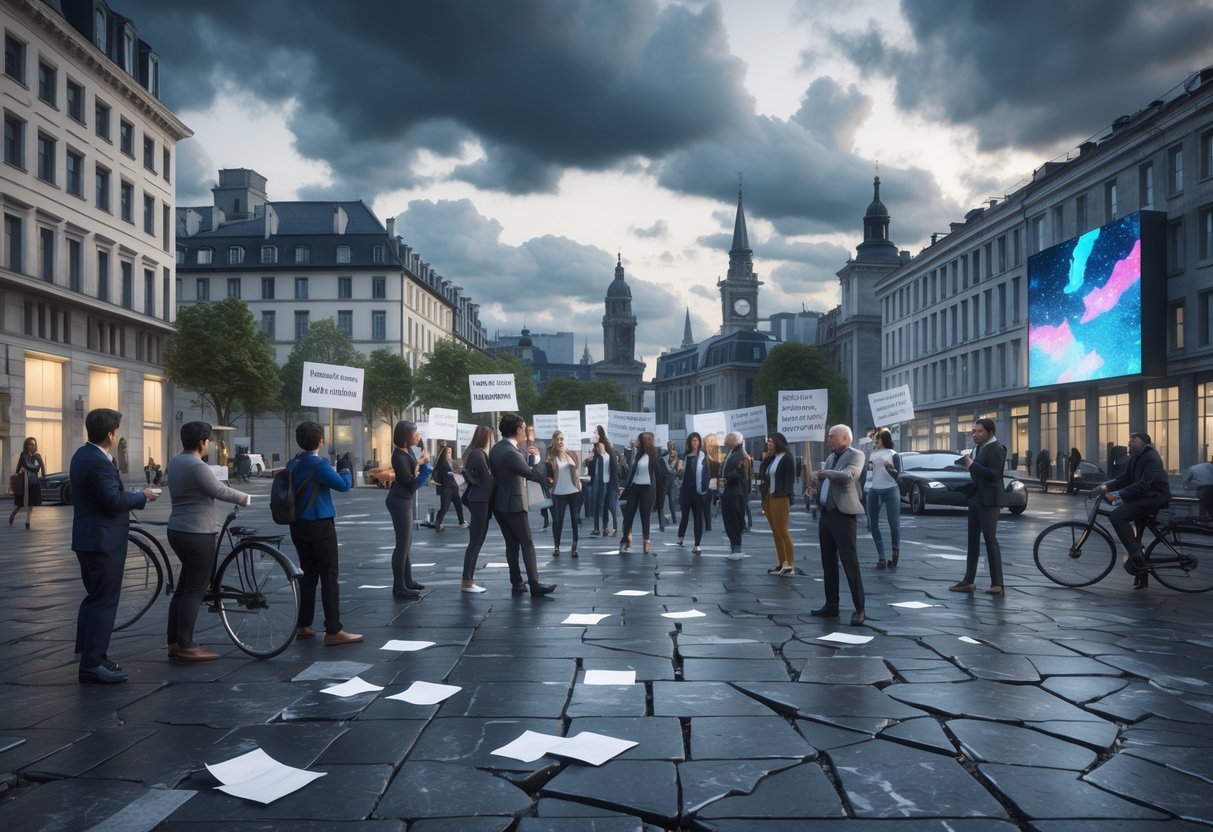
The European Tier 2 scene keeps running into disputes over participation rules and reactions from the community. MENA teams aren’t allowed to compete in both European circuits and their own regional leagues, which splits players and fans.
Eligibility for MENA and Saudi eLeague
The main controversy revolves around dual participation restrictions. Teams in the Saudi eLeague can’t join the European Tier 2 circuit, even though Europe and MENA top-flight leagues have merged.
This rule changes the qualification landscape. The Saudi eLeague acts as a separate route to the EML Challenger Series 2026, not tied to the European circuit.
A lot of MENA teams thought they’d get access to European tournaments after the league merger. Instead, they have to pick between their regional and European competitions.
The rulebook claims this stops unfair advantages. Teams can’t use more than one qualification path for the same championship series.
Current structure:
- Saudi eLeague: Direct MENA qualification route
- European Tier 2: Separate European qualification path
- Both lead to EML Challenger Series 2026
Community and Player Reactions
MENA competitive communities have been loud and clear about not liking the participation restrictions. Players say the rules don’t match the spirit of the Europe-MENA league merger.
Social media is full of frustration from teams who spent time getting ready for European events, only to find out they’re blocked.
The issue goes beyond just the players—organizations now have to pick a regional focus instead of chasing broader European exposure.
Some people argue the rules limit talent development. MENA players miss out on experience against different European playstyles.
Community feedback hints that these restrictions could hurt viewership. Fans wanted to see more crossover between European and MENA teams in Tier 2 events.
Impact on Regional Esports Ecosystem
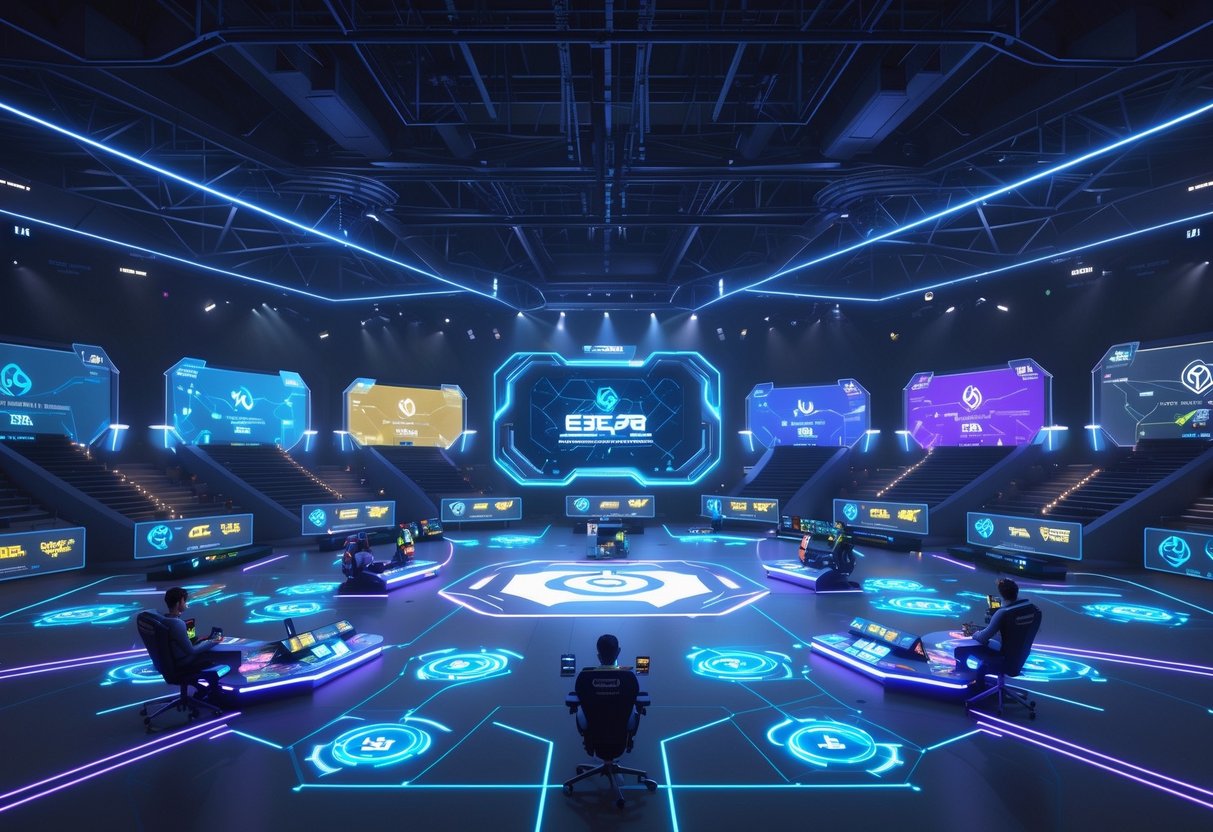
Europe’s tier 2 scene actually gives emerging teams real chances to break through, all while pulling in more regional viewers and sparking market growth. These changes open up more doors for talent and help build stronger business models.
Opportunities for Up-and-Coming Teams
The revamped European Regional Leagues now let teams compete in three splits each year, not just two.
With this expanded calendar, teams get more shots at qualifying for major tournaments.
Fearless Draft shakes things up for developing teams. Players have to master more champions, which shows off their flexibility to scouts and sponsors. Relying on comfort picks? That’s not really an option anymore.
The new setup lays out a clearer path:
- Winter Split (January-March)
- Spring Split (March-May)
- Summer Split rolls on as usual
Each split leads into EMEA Masters events. So, teams get three tries every year to prove themselves on a bigger stage. That takes some of the pressure off—one bad split won’t ruin a whole year.
Quick win: Pick an ERL team and stick with them through all three splits. You’ll really see what it takes to succeed in tier 2.
Regional tournament organisers now run their own season finales. This flexibility lets leagues try out formats that fit their local fans and teams.
Market Growth and Viewership
EMEA Masters Summer 2022 pulled in over 50,000 average viewers, according to Esports Charts. Moving to three events a year should boost that number quite a bit.
The tier 2 ecosystem shows how a well-run second tier helps both players and viewers. European championships often set the tone for strategies that ripple out to global esports.
Regional viewership perks:
- More content all year
- New metas thanks to Fearless Draft
- Local storylines and rivalries
- Wild, experimental gameplay
Teams try out fresh ideas at regional tournaments, away from the sharp eyes of tier 1 analysts. This keeps things lively and genuinely fun for fans.
The 2025 calendar looks dense—there’s pretty much always something happening. Viewers get regular high-level matches, and sponsors see more chances to get their brands out there.
Warning: All this action could burn out players, especially during the busiest stretches.
Frequently Asked Questions
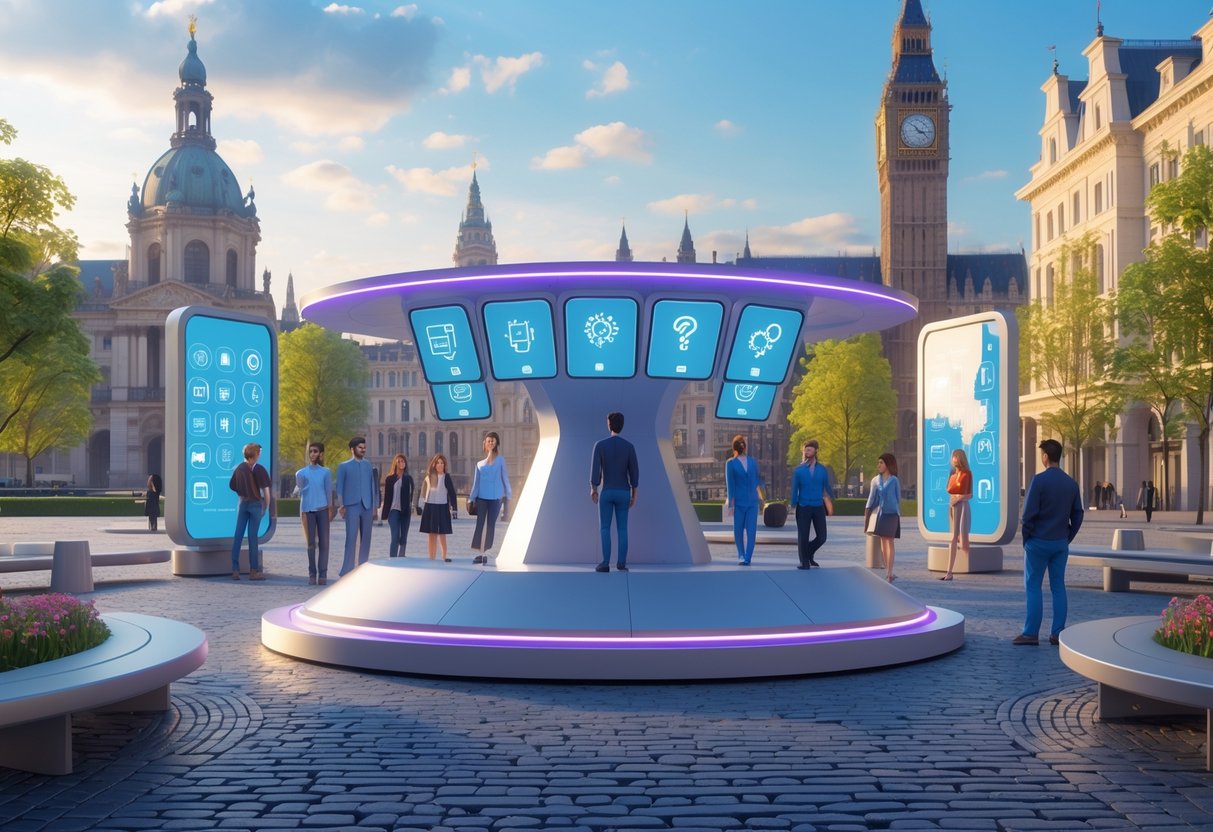
Players and fans keep asking about recruitment, team struggles, and where the biggest tournaments actually happen. These questions highlight how complex and connected Europe’s esports scene really is.
What are the top emerging teams in the European tier 2 esports scene?
We’re seeing strong up-and-coming teams in several titles across European tier 2. In Rainbow Six Siege, squads in the R6 Central Combine and R6 Rainbow Rumble keep showing serious promise.
Many of these teams grind through regional competitions with 16 or more squads. These tournaments hand out 180 competitive points and help surface the next big names.
Quick win: Tune into official streams and watch for teams that keep making deep runs. Consistency across events usually means they’re the real deal.
The tier 2 circuit moves fast. Teams that shine in June and July often carry that momentum into autumn.
How can players get recruited by tier 2 esports organisations in Europe?
Players usually get noticed by playing well in online tournaments. We’d suggest starting with smaller regional events that offer 105-225 points.
Performance tracking really matters. Teams look for players who keep up strong stats over several events, not just one good day.
Organisations often recruit during big tournament seasons. The R6 Central Combine runs June to July, and R6 Rainbow Rumble follows in August and September.
Warning: Don’t pay for recruitment services. Legit teams use public results and community referrals.
Getting to know current tier 2 players helps a lot. Referrals and internal networks often drive recruitment.
What are the biggest challenges facing tier 2 teams in Europe?
Financial sustainability remains the toughest issue. Prize pools of €20,000 per major event have to cover entire rosters and support staff.
Travel costs really sting. With events all over Europe, teams rack up big expenses on transport and accommodation.
Player retention is a constant struggle. Tier 1 teams often poach the best tier 2 talent, so rosters keep changing.
Practice time is hard to come by. A lot of players balance competing with jobs or school.
Sponsorships are tough to land. Most tier 2 teams just don’t have the viewer numbers that big brands want.
Which European cities are hosting the most tier 2 esports events?
Major cities like Berlin, Paris, and London host a lot of big tier 2 competitions. Germany, France, and the UK usually see the most action.
LAN tournaments with 8+ teams hand out 225 points. These usually happen in gaming centres in big cities.
Berlin, Paris, and London pop up a lot as finals hosts. They offer solid infrastructure and easy access for international squads.
Smaller cities get in on the action too. Local gaming communities often organise their own events, adding to the tier 2 ecosystem.
The R6 South Breach tournament runs September to November, often hopping between venues in different countries.
What support mechanisms are in place for tier 2 esports athletes in Europe?
The competitive points system gives teams a clear way to move up. Teams rack up points across major and minor tournaments all season.
We’re seeing more educational partnerships. Some universities now run esports programmes to support players academically.
Mental health support really depends on the organisation. The better-funded teams bring in sports psychologists and wellness programmes.
Many tier 2 players get coaching through community networks. Former pros sometimes mentor new talent, though it’s usually pretty informal.
The EU T2 Grand Finals pays out €15,000. Winners and finalists automatically qualify for the Europe and MENA League Challenger Series.
How do tier 2 European esports teams secure sponsorships?
Most teams kick things off by reaching out to local businesses. You’ll often see gaming cafes, computer shops, or nearby brands stepping in with that first bit of support.
Honestly, social media makes a huge difference for sponsor interest. Teams that post regularly and actually interact with their communities tend to catch more eyes for partnerships. Community engagement really matters here.
Some organizations target specific demographics on purpose. If a team manages to build a loyal fanbase in a certain age group or region, brands that care about those folks start paying attention.
Tournament results? Those speak volumes. When a team keeps showing up on the €75,000 prize pool circuit, sponsors start to notice the value.
Warning: Don’t jump into long-term exclusive deals right away. A lot of tier 2 teams get more out of staying flexible while they’re still building their reputation.
Tracking performance data goes a long way. Teams that keep tabs on engagement, viewership, and who’s actually watching can make a much stronger case to potential partners.


